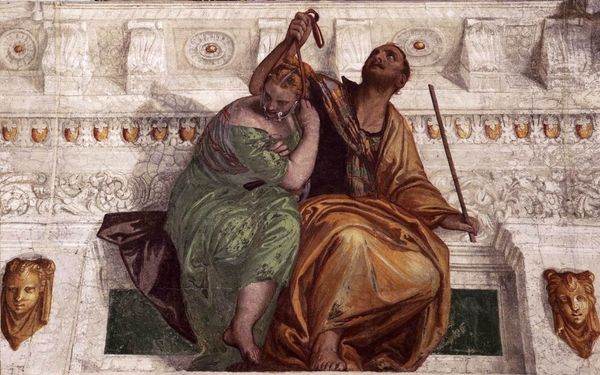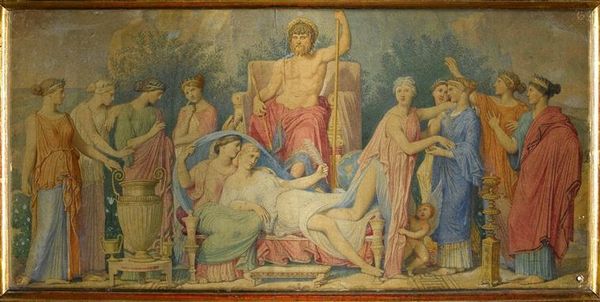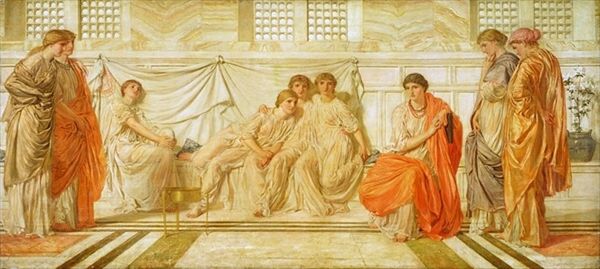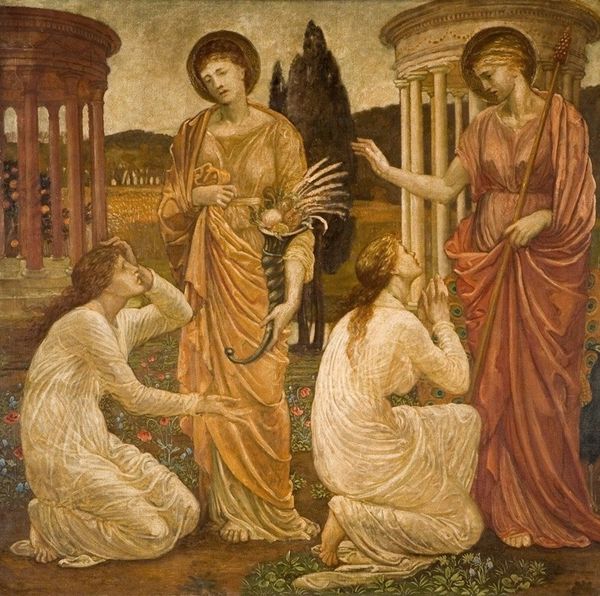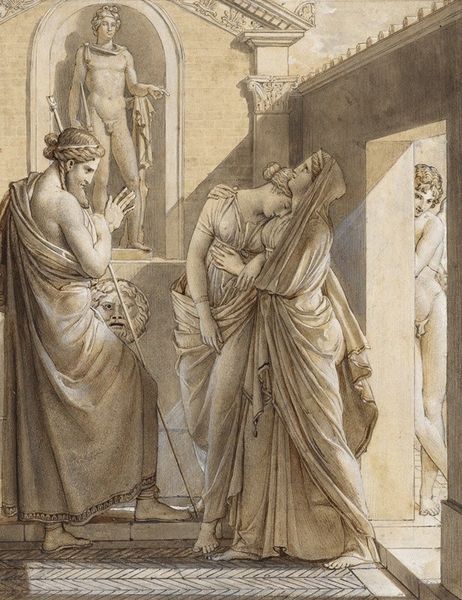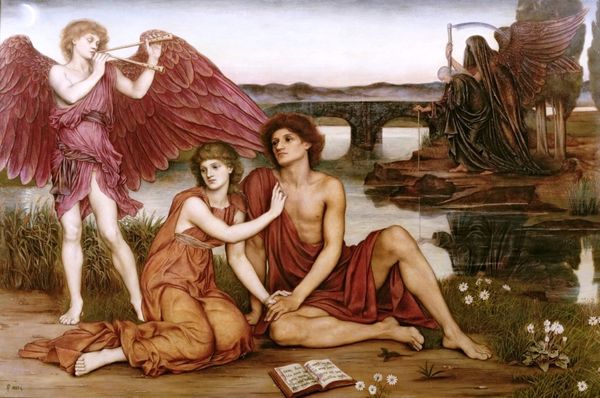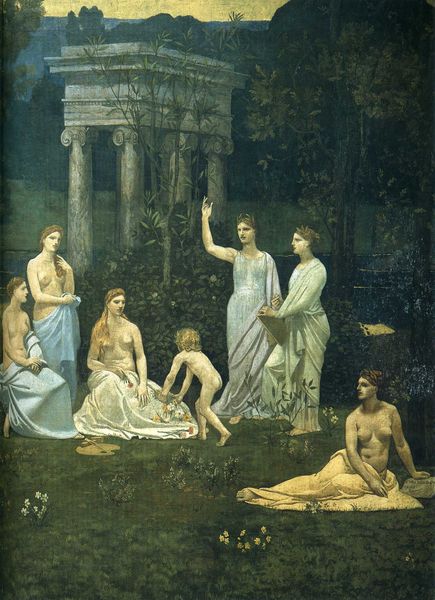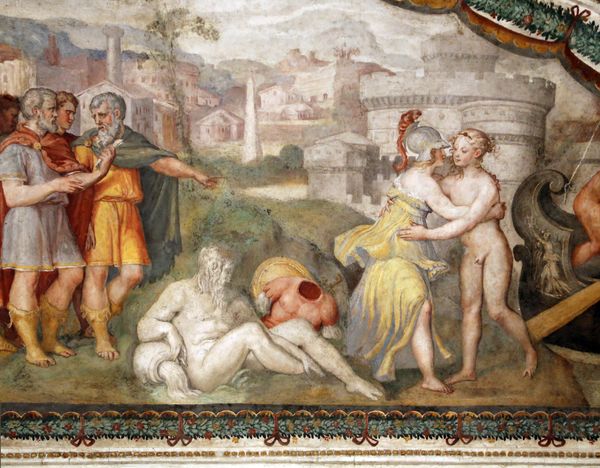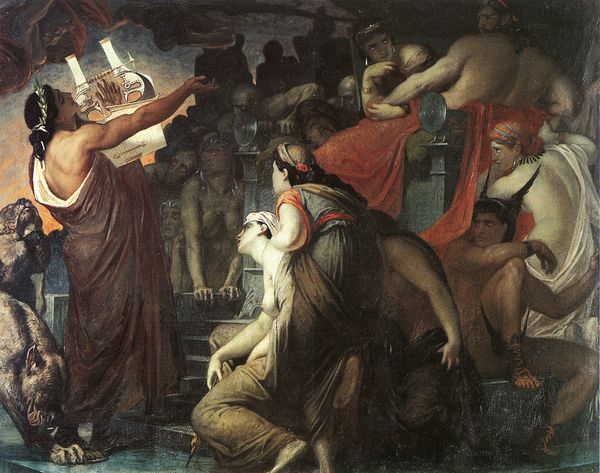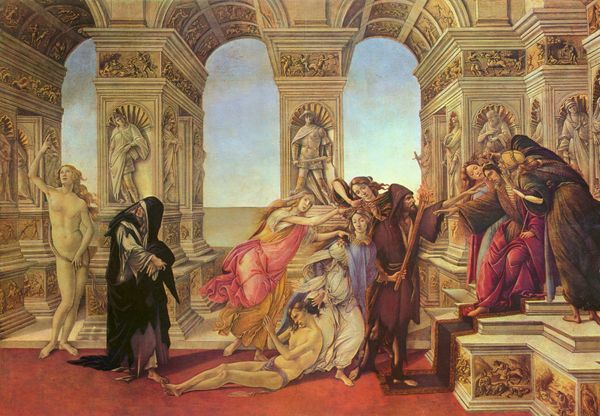
tempera, painting, mural
#
allegory
#
narrative-art
#
tempera
#
painting
#
sculpture
#
figuration
#
form
#
oil painting
#
romanticism
#
mythology
#
line
#
history-painting
#
pre-raphaelites
#
academic-art
#
mural
Copyright: Public domain
Editor: Here we have "Sculpture," a painting, perhaps a mural, by Walter Crane. It feels classically allegorical, but there's a mournful air about it, particularly with the central figure in grief. What do you see in this piece? Curator: This mural encapsulates a moment of crisis in artistic identity. We see the artist grappling with the power structures that dictate what is considered ‘high’ art versus craft. The kneeling figure draped in sorrow likely represents art itself, mourning the dominance of sculpture, the supposed ideal form. Crane, influenced by socialist ideals, might be critiquing the elitism embedded within academic art. Editor: So you're suggesting Crane is commenting on the hierarchy within the art world itself? I hadn't considered the sociopolitical undertones. Curator: Exactly! The triumphal figures looming above art reflect the rigid expectations and classical standards upheld by institutions, stifling other forms of creative expression, particularly those connected to working-class movements. How does the inclusion of historical figures influence your perception? Editor: It reinforces the connection to established authority and the weight of tradition bearing down on artistic innovation. I see how it’s not just a beautiful image but a potent statement on the politics of art. Curator: Indeed, Crane compels us to question how artistic value is constructed, promoted and ultimately, who benefits from it. Hopefully you will think of these questions when you approach artworks in the future. Editor: That is a brilliant insight, thank you so much for opening my eyes to the underlying discourse and power dynamics in visual arts.
Comments
No comments
Be the first to comment and join the conversation on the ultimate creative platform.
